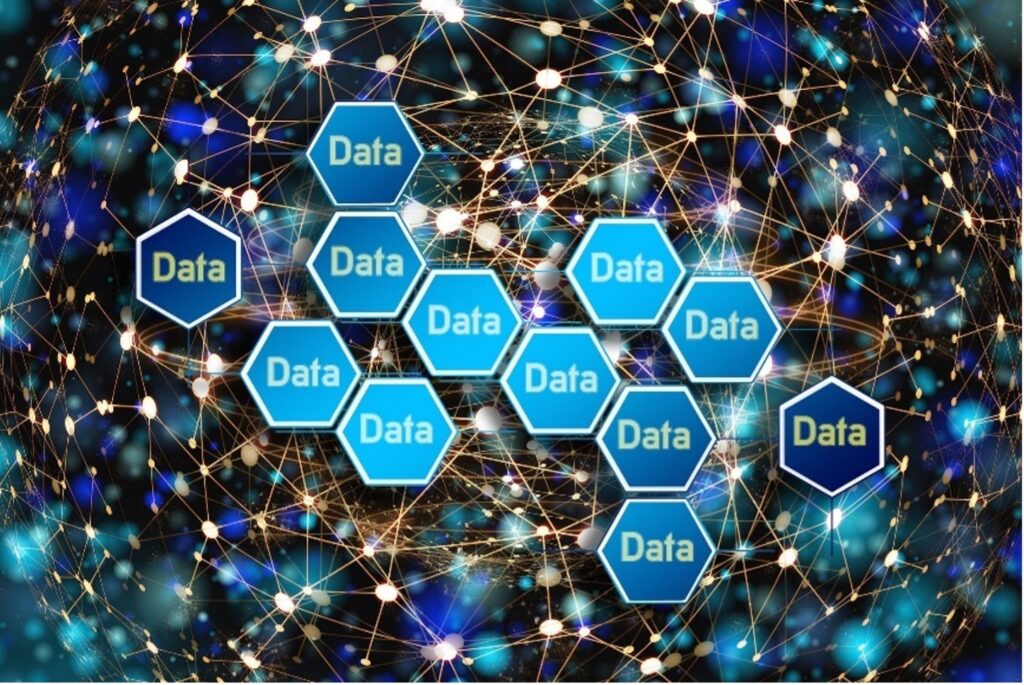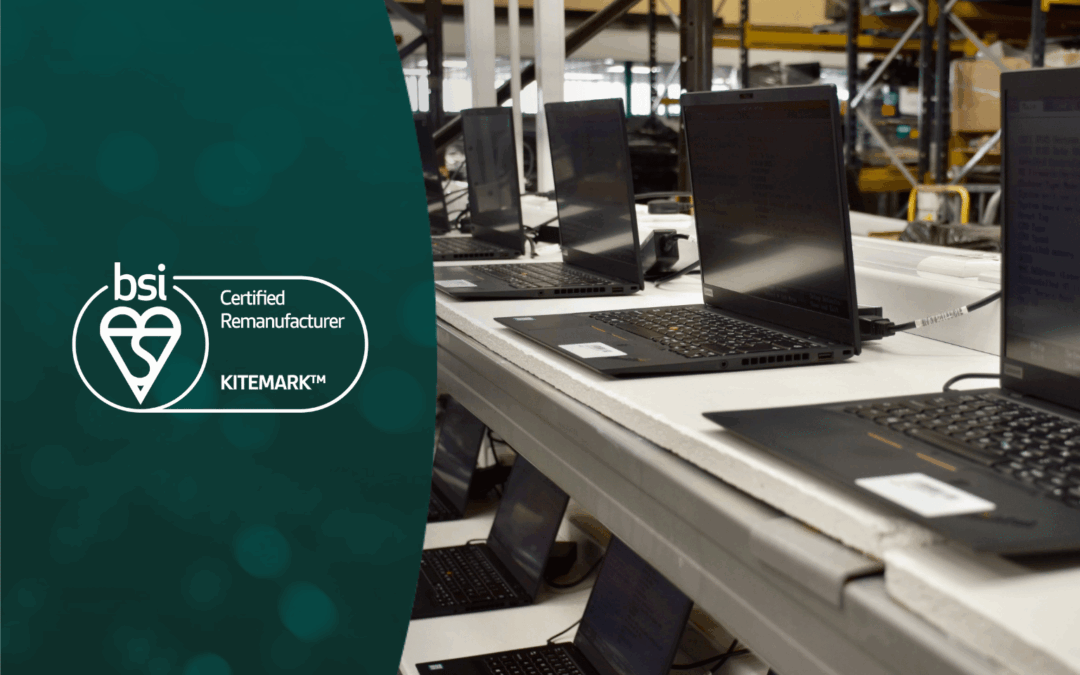Society’s rapid digitisation demands server technology advancements to match; keeping pace with the mind-boggling quantities of corporate, PII and Internet of Things data generated each and every day.
The advanced functionality and business benefits delivered by cloud technology are evident, none more so in recent years. However, our digitalisation has been at a cost to the environment. Despite its rather ambiguous name, the cloud now has a greater carbon footprint than the entire airline industry; the data centres behind it demand substantial energy resources to operate. Today, these account for 2% of the world’s total electricity use. *
A single data centre can consume the equivalent electricity of for 50,000 homes, annually.
The MIT Press.
Although for many enterprises, their transition to cloud services may feel very recent, the advent of edge computing is already changing the way our data is processed and transmitted.

What is Edge Computing?
Created to complement the capabilities of the cloud as we know it, edge computing acts as an extended network. Rather than sending every piece of data to a central location, which can be a significant distance away, edge computing processes and stores the data close to where it was originally generated – the edge of the network.
By decentralising the initial management of the data, only relevant information is sent on to the cloud for storage. The majority of the information is processed at the edge – much like a wheel with the outer rim and the spokes feeding the central hub.
Edge nodes are closer to the users; they can be on-premises or at a shared location. They can even be embedded into other devices as micro-edge data centres, such as intelligent sensors within street lights, for example.
Maximising the operational benefits of the cloud, incorporating edge computing into a wider network can give enterprises more control, greater cybersecurity risk management – and help them to incorporate more sustainable IT practices.
A significant driver and one of the best examples of edge computing technology is the roll out of the UK’s 5G network. The multi-access edge network allows service providers to limit communication network congestion and deliver the high performance, high bandwidth and low latency demanded by 5G users.
According to a report in 2020 by Grand View Research, the global edge computing market is anticipated to reach US $43.4bn by 2027. ^

What are the benefits of Edge Computing?
Improved efficiency & performance.
As it brings processing and storage close to users and their devices, data is not transmitted back and forth to another location. Data processing is faster, bandwidth use and latency is reduced, which results in less traffic and congestion. Ideal when it comes to automated tasks, the entire system has greater coverage; it operates with greater speed and efficiency, delivering the high-speed results expected by today’s zealous users.
Real-time decisions.
A faster processing time allows organisations to analyse and make effective data-driven decisions in near real-time. Event-based decisions enables automated systems, provides greater responsiveness to the market, and better customer service.
Reduced costs.
Although the initial set-up will require some investment, in the longer-term, edge can lower operational and energy costs when it comes to managing the escalating quantities of data; multi-access edge also saves on bandwidth costs.
Improved data security.
As with all networks, there are cybersecurity threats and data governance challenges to navigate, but is edge computing safer than the cloud?
An edge network will increase the attack surface, and therefore the system isn’t without its security risks. It can be subject to Distributed denial of service (DDoS) and routing incidents, such as black hole and wormhole attacks. The latter being one of the most severe security attacks in wireless networking. This records packets of data, before tunnelling them to another location.
The strategic placement of a ‘wormhole’ can disrupt on average 32% of all communications across the network.
University of British Columbia.
Despite this, from the outset, edge computing is built with security in mind. If one node is attacked, the others can continue to function, so is edge computing more secure? It’s widely considered to be a secure model so long as effective cybersecurity practices are implemented to protect company data. Reliable routing protocols and highly secure intrusion detection systems can continually monitor for malicious traffic and known routing information attacks.
By processing data locally, sensitive information is not automatically transmitted to the cloud. This reduces both quantity and the time that data is in transit where it could be intercepted – making life much harder for hackers. They would need access to numerous nodes or entry points before they could access any valuable datasets.
Organisations can process data at its point of collection, inside their local network perimeter and the corporate firewall, which mitigates against potential threats.

Is edge computing sustainable?
Energy Consumption.
By reducing processing time, bandwidth use, latency and the amount to traffic to and from the central cloud, the edge model dramatically reduces overall energy consumption.
Likewise, as only essential data is sent and stored in the cloud, there is a reduced need for data centre storage. As an example, this may be regulatory or transactional information. There is far less duplicate or dirty data being retained unnecessarily, slashing the resources required and decreasing the cost of the central storage itself.
The diminishing data storage will lower energy use and cooling – this, in turn, our global data centres will produce fewer greenhouse gas emissions.
It is forecast that as little as 25% of enterprise data will be sent to a central cloud by 2025.
Particularly helpful in rural areas, some edge nodes can run without a continuous internet connection, processing data offline. This reduces power usage further but no connection also means no unauthorised access.
Hardware reuse.
Further to the substantial energy and emissions savings, a new edge network doesn’t require newly manufactured hardware, reducing the impact on the environment. There is no need for virgin mining for precious metals or unnecessary e-waste.
A circular approach can be taken, redeploying your redundant IT assets. Servers, switches, cabling, storage drives and even software can be repurposed following a data centre decommissioning project, for instance. The edge computing network can be scaled up or down using this ‘redundant’ IT equipment on demand.
It is essential that redeployed devices have undergone secure data erasure prior to inclusion in the edge system. If you intend to redeploy assets that would have otherwise been sent for data shredding, data destruction services can use the advanced Blancco data erasure software instead. This sustainable route to secure IT asset disposal ensures the device remains intact and can be reused. Guaranteeing your GDPR data disposal compliance, your ITAD partner will ensure that an IT asset disposal accreditation certificate is issued for each piece of equipment. Leading IT asset disposition services operate their own recommerce outlets. When purchasing refurbished technology through an ITAD supplier, you can be sure it also comes with a robust ITAD chain of custody and an ample warranty.

An edge infrastructure will reduce your carbon footprint and increase its social responsibility, improving your organisation’s ESG score.
By processing locally, fewer resources are required and performance is greatly improved. The substantial reduction in energy consumption within the edge network and the cloud data storage centres has huge potential to dramatically reduce the environmental impact of our global digitalisation.
Although they might previously have been considered to be end-of-life IT assets, by reusing and redeploying devices, the edge model can be a circular networking solution, reducing e-waste and the manufacture of brand-new devices. Taking a sustainable approach will dramatically reduce the capital expenditure for the nodes, the devices and the decentralised data centres within your edge infrastructure.
The edge model can provide a host of business benefits. It can deliver greater operational performance and cost efficiencies, facilitate real-time, data-driven decisions, mitigate cybersecurity risks and help CISOs respond to some of the biggest challenges in data governance.
*RT Insights, ^ Trending Tech
tier1 Group is proud to be the UK’s leading circular, environmentally friendly ITAD service. We promote the refurbishment, resale and reuse of business technology, wherever possible.
Rated ‘Excellent’ on Trustpilot by our customers, our own recommerce outlet, tier1online.com, will help you reach your sustainable IT goals through the procurement of cost-effective devices. All are supplied with an extendable, one-year warranty and a 14-money-back guarantee.
Our secure data wiping services, refurbishment and resale platforms can support your organisation – to find out more contact our friendly teams on 0161 777 1000 (Manchester), 01621 484380 (Maldon) or visit www.tier1.com
Resources.
Gartner, EC Council Cybersecurity Exchange, RT Insights, Tech Research Online, MIT Reader, Tech Buyer, Trending tech, Trenton Systems, The University of British Colombia,



